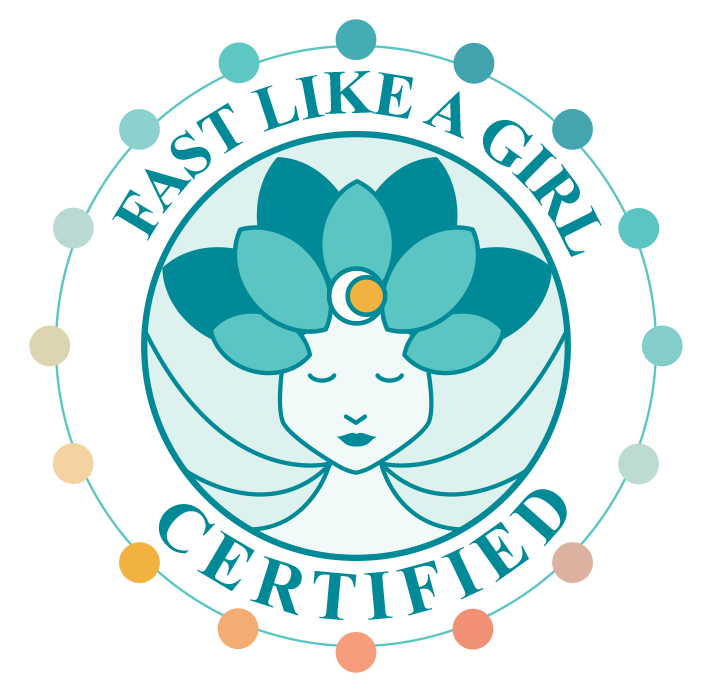Are your knees:
- stiff when you get up,
- and the stiffness eases up as you move around a while,
- then your knees get painful with more movement or exercise,
If so, you may have osteoarthritis of the knee.
You may hear or feel creaking, crunching, or grinding sensations when you bend your knees.
In addition, you may detect small hard lumps in your knee called osteophytes.
Alternatively, your knees can be swollen due to extra fluid in the joint.
One of the most common chronic diseases
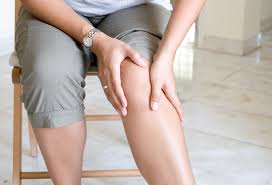 As osteoarthritis of the knee progresses, you may notice your knee giving way when you are standing or walking due to the muscles surrounding the joint becoming thin or weak and the knee joint becoming unstable. In addition, the knees may not bend as far as they used to or look slightly bowed or deformed.
As osteoarthritis of the knee progresses, you may notice your knee giving way when you are standing or walking due to the muscles surrounding the joint becoming thin or weak and the knee joint becoming unstable. In addition, the knees may not bend as far as they used to or look slightly bowed or deformed.
One of the most common chronic diseases of older adults is osteoarthritis of the knee. It tends to happen more in women, the overweight, and people over 40.
It is also frequently found in people who have done a lot of hard physical activity or have had injuries to the knee. In addition, people who have damage to the joints from other diseases like rheumatoid arthritis or gout can also get osteoarthritis.
Now, this is not saying that doing hard, repetitive activity is going to cause you to have osteoarthritis of the knees! The same goes for being a woman, over 40, or overweight. There is a lot more that goes into developing a condition than that, from my point of view. Let me explain how I see it.
Fascia Rules
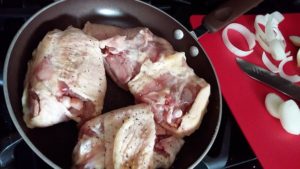 From my bodywork training, I know that fascia is what rules what happens structurally in the body.
From my bodywork training, I know that fascia is what rules what happens structurally in the body.
I think about fascia as a three-dimensional spider web throughout the body.
It is under the skin, covers bones, muscles, every organ and when it comes down to it, connects every cell to another cell.
Fascia is the tough membrane that you fight with when you are cutting chicken or other meat before cooking.
Fascia is like a resilient elastic bag, with the bones creating tension inside to hold it from collapsing. From the point of view of fascia, we are not bone resting on bone with the fascia holding us together. The bones not like bricks stacked up under gravity, they are floating separate from each other in the fascial bag. Bones are aligned by the fascial pull on them.
Fascia holds things together, connecting parts yet allowing them to move freely. Areas of fascia can get restricted, limiting that free movement. Restrictions can come from injuries, inflammation, and toxic accumulations in tissues.
Knee problems don’t always happen only at the knees
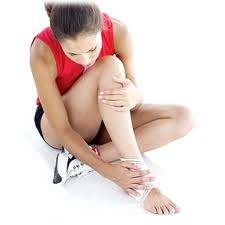 Injuries that affect the fascia around the knees do not always happen only to the knees.
Injuries that affect the fascia around the knees do not always happen only to the knees.
This is evident with a sprained ankle. It is not just the muscles of the ankle that stretch and bruise.
The fascia that runs from the ankle up the leg is affected. The knee fascia is directly in line to get pulled one way or the other from an ankle injury. In fact, an injury to any part of the body can translate to the fascia of the knee to restrict it.
When a restriction in fascia from any cause compresses a joint like the knee, then the joint is unhappy. It will do what it can to keep functioning. However, with that compression, pressure is put on the knee joint.
The cartilage may rub and the body may not be able to rebuild enough of it there. The bones of the joint may get displaced from their normal alignment, and the bone ends remodel differently according to the stresses put on them. Little bone pieces called osteophytes are built from physical stress.
How you get knee stiffness and swelling
This unhappy knee joint lets you, the owner, know through stiffness and pain.
The body may compensate for a compressed joint by putting extra fluid there to cushion things. When you get up from resting, this fluid will make the knee joint hard to move at first. As you move around a bit, the fluid will start to drain from the joint, so the stiffness lessens.
But add further pressure on a compressed knee joint by putting your body weight on it and moving the joint by walking, and it will tell you how unhappy it is through pain.
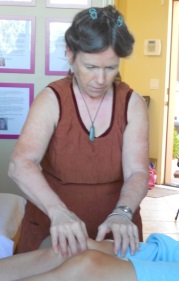 Pain killer medication can make you feel OK for the moment, but it is not getting to the cause.
Pain killer medication can make you feel OK for the moment, but it is not getting to the cause.
With medication dulling the pain, you may continue to use the joint and continue to aggravate and injure it.
The “disease of osteoarthritis” continues to evolve. The bones will continue to remodel according to the stresses put on them, and the result can be deformity to the point of disability.
Fortunately, there are bodywork modalities that are able to release the restrictions in fascia. My chosen modality is Bowen bodywork to release restrictions and remove the toxins. There are others that are also effective.
When I attended a conference recently, a study with osteoarthritis of the knee was presented that knocked my socks off. The study was published in The Clinical Journal of Pain in November 2016.
It was unusual because it looked at the use of a cabbage leaf wrap for the knees.
Cabbage Leaf Wrap for the Knees
Cabbage can be applied topically to osteoarthritic knees for pain relief resulting in a better quality of life.
At least, that’s what 81 people, aged from 55 to 75 in the study showed. After 4 weeks of applying cabbage leaf wraps to their knees, the treated group reported significantly less pain than the people given usual care. In addition, their quality of life was significantly better after 12 weeks.
Overall, this study recommended cabbage leaf wraps for patients with osteoarthritis of the knee.
Do try this at home
Do try this at home, if you have knee stiffness on rising and pain after prolonged movement. It is pretty simple to do.
Take 2 big leaves from a head of cabbage for each knee you wish to wrap.
Cut the stems out from them and discard it because that part is not very pliable.
Then hit and roll over the leaves with a rolling pin to bruise them.
Wrap the leaves around your knee and fix them in place with bandages. I would imagine elastic bandages would hold nicely.
Keep the cabbage leaves wrapped around your knees for at least 2 hours. You may also go to bed with the cabbage leaf wrap and leave it overnight.
Over time, done every day, this home cabbage leaf wrap can deal nicely with the discomfort.
Then to go deeper, schedule a session with a qualified bodyworker like me whose work releases the fascia.
Remember, the next time you eat cole slaw, cabbage can be used on the knees for healing.
WANT TO USE THIS ARTICLE IN YOUR NEWSLETTER OR WEB SITE?
You can, as long as you include this complete blurb with it: “Naturopathic Physician Dr. Cheryl Kasdorf is a doctor who listens and has answers with a natural approach that works. She is known as the go-to person to get back your get-up-and-go when it is gone, gone, gone. Get your FREE gift “Dr. Kasdorf’s Health Secrets for Feeling & Looking Great” at drcherylkasdorf.com




